
Piercing the veil
A new exhibition at Buxton Contemporary finds a rich complexity in the shadowy terrain between life and death.
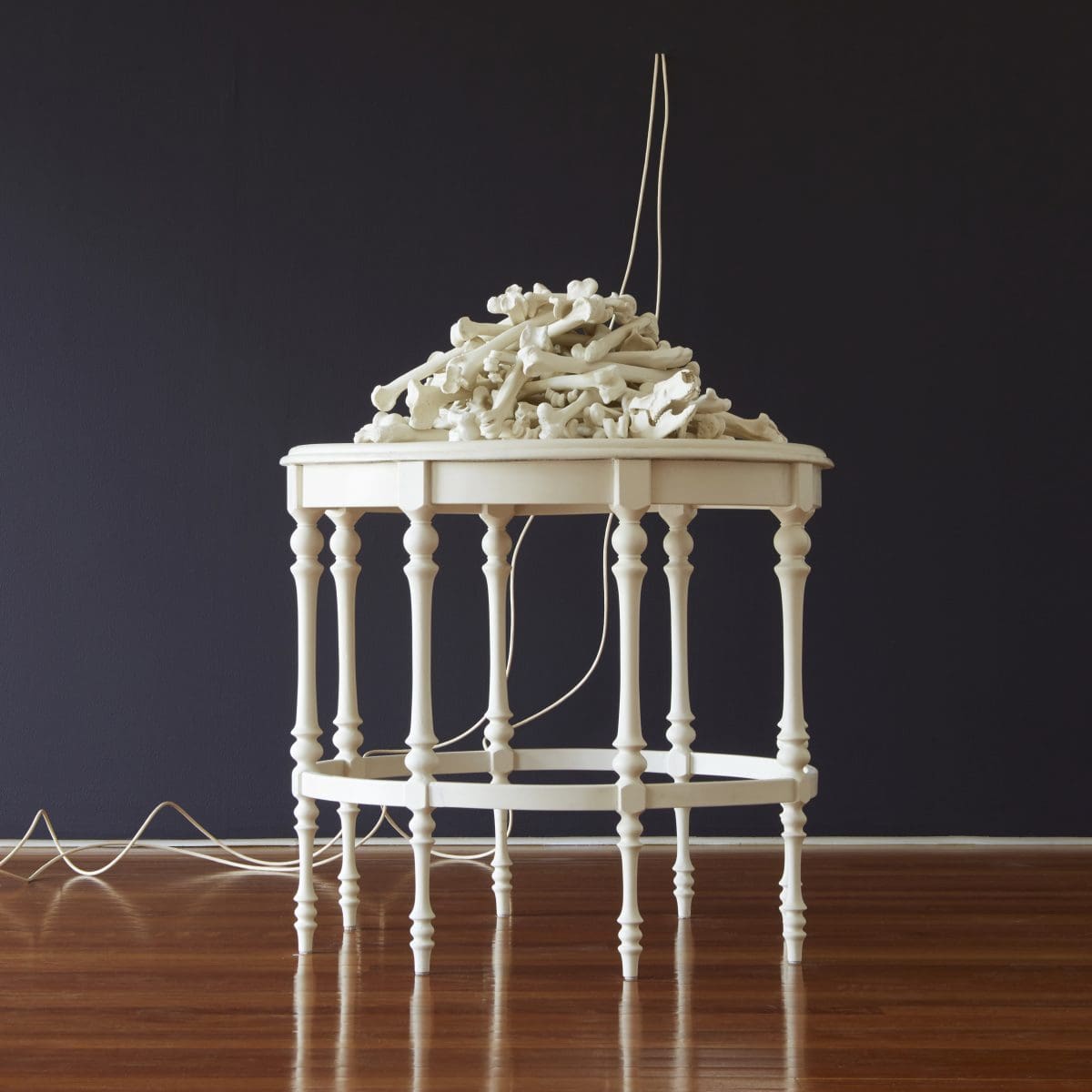
Hayden Fowler, Australia, 2017, polymer plaster, ochre, sound, dimensions variable, edition of 2 + 1AP, (Installation detail).
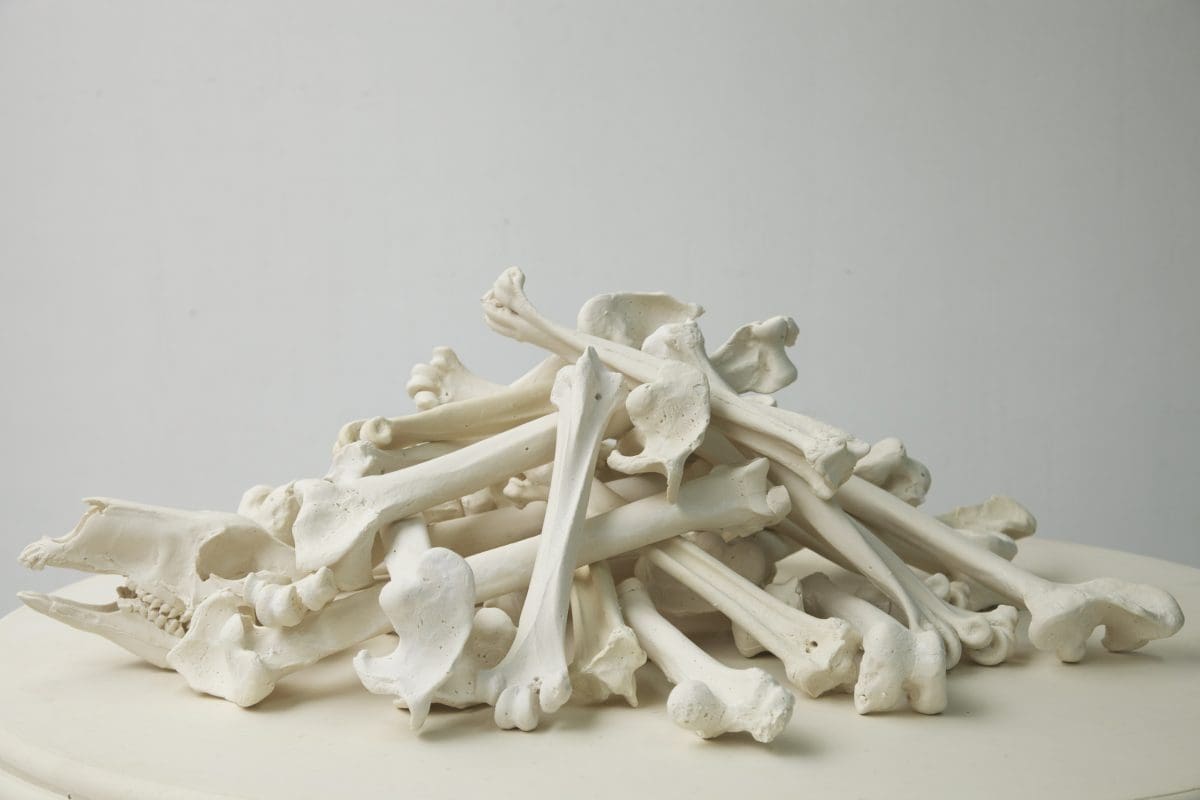
Hayden Fowler, Australia, 2017, polymer plaster, ochre, sound, dimensions variable, edition of 2 + 1AP.

Hayden Fowler, brave new world (i), 2017, pigment print on hahnemuhle paper, 130 x 87cm (unframed), edition of 6 + 2AP.
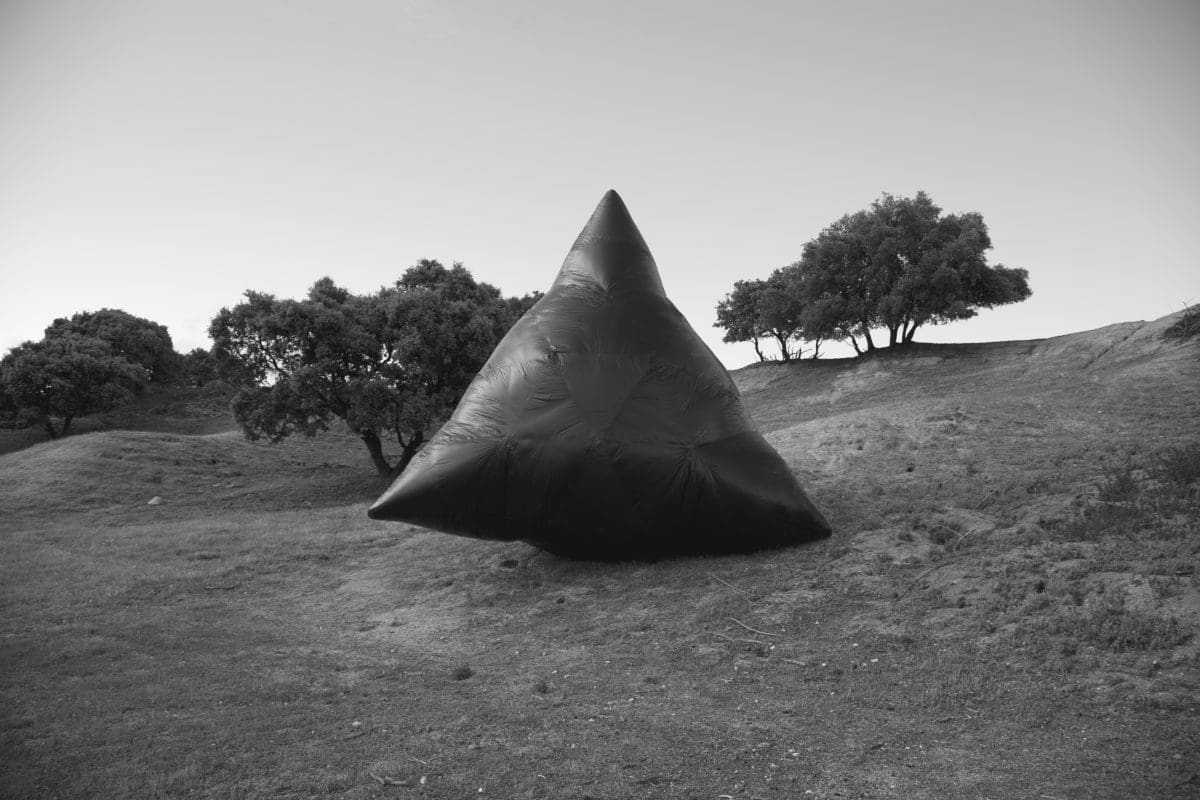
Hayden Fowler, future distant history (ii), 2017, pigment print on hahnemuhle paper 87 x 130cm (unframed), edition of 6 + 2AP.
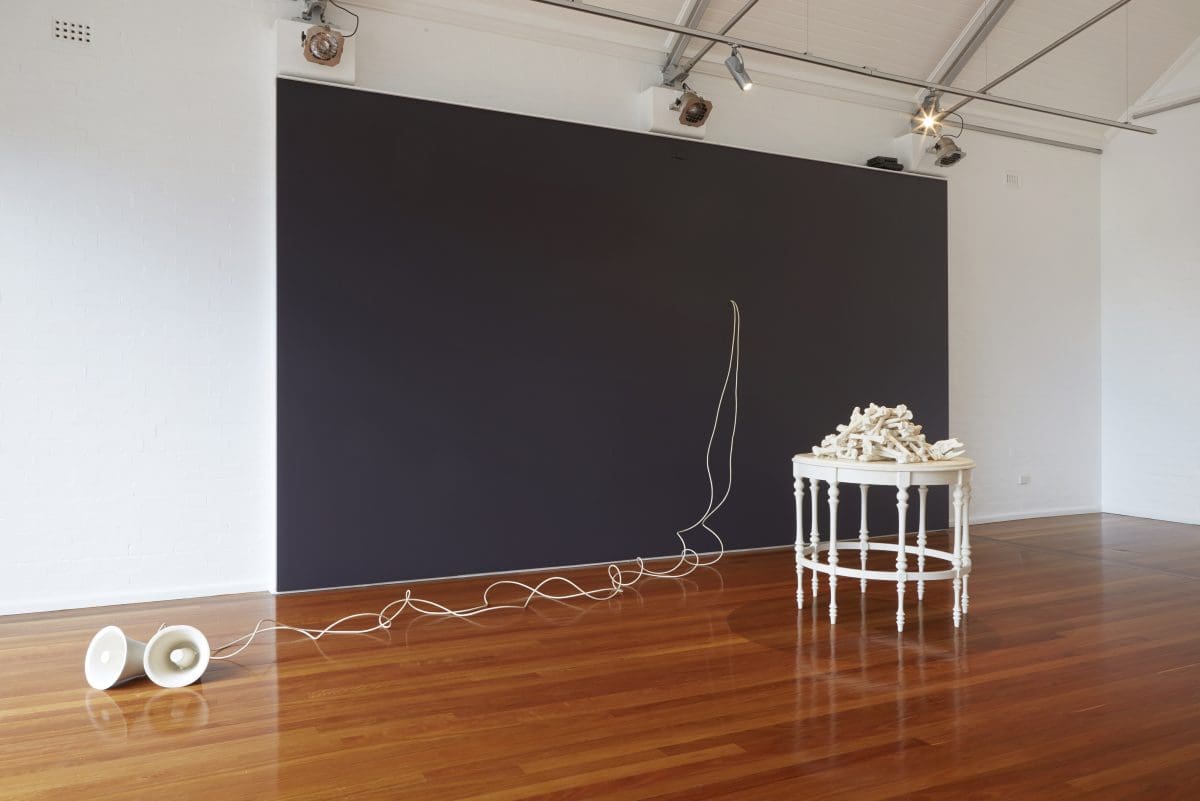
Hayden Fowler, Australia, 2017, Polymer plaster, ochre, sound, dimensions variable, edition of 2 + 1AP, (Installation view).
Hayden Fowler’s solo show, Future Distant History, had a distinct post-apocalyptic edge. The title was a clue (picturing the present as the past of a destroyed future is what post-apocalyptic stories do) and so was the pile of bones perched on a pretty white table.
And like a nuclear test site, Fowler’s neat cairn of plaster bones read like the remains of a man-made disaster. Along with Oppenheimer, he seemed to have been both witness to, and architect of, some terrible calamity. Fowler’s Australia was bleached and bleak, but not silent. Two white plaster speakers issued a continuous, pulsating, hiss. In the Future Distant History there was only white noise.
Fowler’s video, Silent Spring, 2009-2017, took its title from Rachel Carson’s 1962 polemic on pesticides. This book was highly influential on the early environmental movement and is an investigation into the toxic legacy of humanity. Fowler took this notion and filtered it through a camp sci-fi aesthetic. In his video loop a suspicious pink pool bubbled and smoked in a kitschy-cool landscape which seemed like a film set borrowed from Star Trek at the height of its psychedelic 1960s heyday.
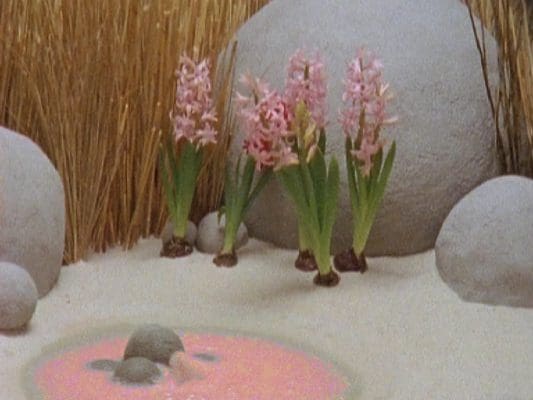
Two black and white photos in the show were also titled Future Distant History, 2017, and they too were reminiscent of filmic sci-fi. In these images large ambiguous monuments seemed to have crash-landed in a rural landscape. One was roughly spherical, the other a pyramid. Both seemed to be inflated with air and were covered in conical protrusions. Dark and mysterious, they could trace their lineage to the ominous black monolith in Stanley Kubrick’s 1968 movie masterpiece, 2001: A space Odyssey (although there wasn’t a monkey in sight). In fact, the only life forms visible were trees, something which added to the post-apocalyptic vibe.
The three large black and white photos called Brave New World, 2017, also took their title from a book: Aldous Huxley’s 1931 classic dystopian novel. However, in this case it was a little harder to see the connection between the title and the story unfolding in the photographs. In this series a donkey bears a large, but unidentifiable, load and drags the base of a carved wooden table by a rope.
Were Fowler’s Brave New World photos a meditation on futility? A comment on the weight of civilization, like something to be dragged around like the proverbial albatross? Documentation of the exploitation of non-human creatures? Another reference to our propensity for bad behaviour? Maybe all of the above. Hayden Folwer’s Future Distant History, like all post-apocalyptic stories, was less an exercise in prognostication and more of an invitation to take a long hard look at ourselves right now.
Hayden Fowler: Future Distant History was on at Artereal, Sydney from 5 to 29 July.